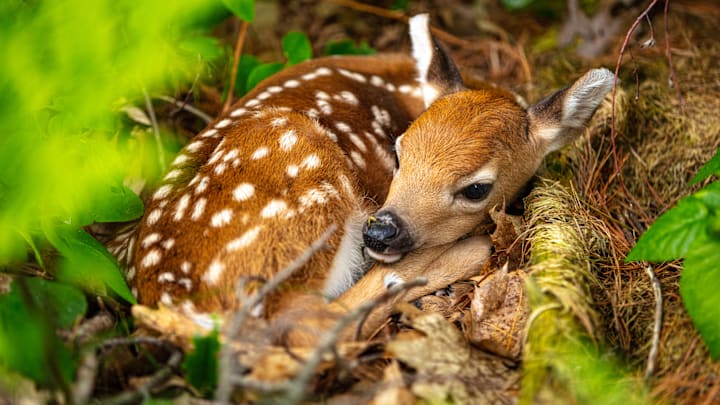There’s something especially charming about the dappled pattern on the backs of baby deer. But the white spots are more than just adorable: They also help the defenseless fawns stay safe during their early days on Earth.
As Henderson State University biology professor Renn Tumlison explains, the flecks effectively camouflage a fawn by mimicking patches of sunlight that shine through trees and other plants, landing unevenly across the already-varied neutral hues on the forest floor. Without the strength or size needed to outrun a predator, a newborn fawn’s best bet for survival is to simply blend in with the scenery.

When you see a fawn curled up among the foliage without a chaperone in sight, it’s hard to imagine a more vulnerable creature. But that solitude is actually another protection strategy. For the first few weeks of a fawn’s life, its mother generally only reappears to feed it or lead it to a new shelter. Because mature deer are easier to see and smell than their offspring, a doe’s absence helps mitigate the risk of drawing a predator straight to her baby. Once a fawn is capable of fleeing danger as fast as its mother, they start spending more time together.
When Do Fawns Lose Their Spots?

There’s not exactly a hard-and-fast deadline for shedding the spotted fur, but most sources agree that the process typically happens when a fawn is somewhere around three or four months old. That said, some deer species don’t ever lose their spots—like the fallow deer, the chital (or axis) deer, and the sika deer.
Do All Baby Deer Have Spots?
While there are exceptions to every rule, most baby deer are born with spots. If you live in North America, the white-tailed deer is probably the species you’re most familiar with—it’s widespread across the continent. Even elk, which are also a member of the deer family, are born with white spots.
